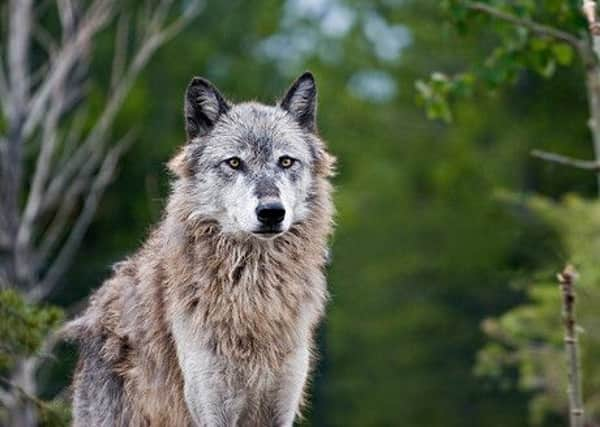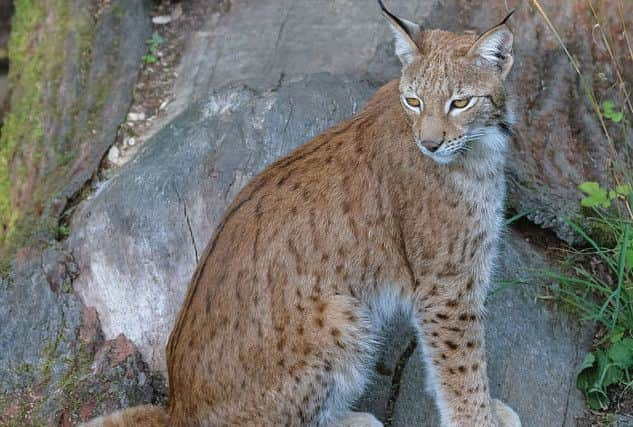Will wolves be reintroduced to Scotland?


Scotland’s pioneering role as a “re-wilding” location means that serious thought is being given to the re-introduction of carnivores that died out in Scotland over 200 years ago.
Normally used in an attempt to protect species under threat, re-wilding is a form of conservation biology which gradually releases animals into an area that they were previously eradicated from.
Advertisement
Hide AdAdvertisement
Hide AdWith increasing deforestation and urbanisation occurring throughout the country, re-wilding advocates believe that reintroducing rare breeds will help to slow or even reverse the destruction of natural habitats. Others have expressed concern over the potentially negative effects of human-wolf interaction due to their pack mentality and the relative compactness of Scotland’s wilderness.


The important role of wolves in the food chain is due to their status as “keystone species”, which have a direct effect on the ecosystems that they inhabit or are absent from.
Speaking on hopes of a Scottish reintroduction, Researcher Isla Hodgson of the Aberdeen Centre for Environmental Sustainability (ACES) said: “In the absence of predation, red deer numbers have catapulted to such an extent that the ecosystem is suffering; new saplings are consumed before they have chance to grow, and little sustenance is left for the deer themselves and other species.
“Wolves specialise in killing deer and so could naturally regulate these deer numbers. Furthermore, wolves would be an enormous pull for tourists, benefiting the economy as well as ecology.”
One of the biggest success stories for the reintroduction of wolves has been in Yellowstone National Park in the United States. Since the species has been reintroduced, they have helped to relieve pressure on endangered beavers from coyotes and also helped to control the country’s vast elk population, with hopes of similar successes for Scotland.
However, the relatively cramped setting of the Scottish Highlands would likely place wolves in contact with the human population, thus putting public support for the scheme in jeopardy should any incidents involving humans or livestock occur.
Another option advocated by The Naked Scientists and Rewilding Britain, a charity dedicated to restoring previously-extinct species, is to reintroduce the Eurasian lynx - another top predator which naturally resides in the northern hemisphere.
Describing their suitability for reintroduction to Britain as “excellent”, Rachel Dunachie of Rewilding Britain said: “Lynx help woodlands regenerate by controlling roe deer and invasive species such as sika deer. They can also reduce fox numbers.
Advertisement
Hide AdAdvertisement
Hide Ad“They would have ample tree cover in parts of Scotland and northern England. They live across Europe and have been successfully released into Switzerland.”
Unlike the wolf, the lynx is a solitary and shy animal, with a recent report claiming that no reported cases of lynx attacks have been made in areas of its natural habitat. Extinct in much of Europe by the mid- 20th century, its natural habitat is the forest.
Independent charity The Wolves and Humans Foundation said: “In order for any reintroduction of the wolf to Scotland to be successful, it is first necessary to secure a safe and viable future for wolves in areas of Europe where they have managed to survive human persecution, and in areas where they have returned, aided by legal protection and European Community policies and conventions encouraging conservation of native habitats, flora and fauna.
Rewilding Britain’s Rachel Dunachie added: “Wolves suffer from many centuries of demonisation and mythmaking. No reintroduction would be attempted without widespread public consent and enthusiasm. We would have to manage livestock differently if wolves were present, as people do around the world. There would also need to be compensation schemes for the small number of livestock losses that would result.”
At present, the Scottish Government has not indicated any plans to reintroduce any of these “keystone species” to Scotland.